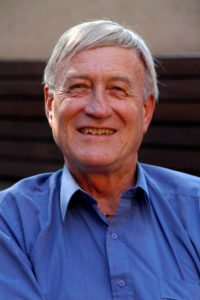
‘Earth Day’ was first celebrated in 1970 and gave voice to many concerns about the global environment. Scientists played a major role in drawing attention to our impact on the planet and millions marched in response. Across the world nations, cities, businesses and communities began to address environmental issues.
The 1970s and 80s saw the rise of environmental science, environmental protection agencies, environmental policy and environmental assessment with the worst pollution of air, water and land being addressed. But deeper issues about our consumption of energy, materials, food and forests began to surface and serious questions were asked about global limits and the pursuit of single-minded economic development. Should we stop economic growth? What about the 1 billion people in extreme poverty?
The UN’s World Commission on Environment and Development in 1987 resolved this issue in theory by creating the idea of ‘sustainable development’. This suggested that we could grow economically and help the environment, rather than destroy it. For the last three decades since this concept was introduced to the world, this is what scientists and policy makers have striven to achieve. Sustainability research has now become one of the fastest growing scientific fields today.
The journal’s vision is to work closely with scientists, policy makers and the general public to facilitate and enhance the communication of information in the field of sustainability.
So, what have we achieved during this time and where do we go from here? In 2000 the world agreed to the Millennium Development Goals which were highly successful in that global extreme poverty was reduced from around 40% to 15% and many global social goals improved dramatically; but the global environmental goals deteriorated, especially on climate change and biodiversity. So, in 2016 the nations of the world signed up to the Sustainable Development Goals and the Paris Agreement on Climate Change. Now we must make a huge global shift toward a sustainable earth – this is the world’s main priority.
To do this we need the science of sustainability to reach not only policy makers but society itself. We must communicate the gravity of our global environmental situation clearly to people. To support this global effort, it is critical that this research is shared and used internationally, without restriction.
With this in mind, BMC (part of Springer Nature) launches its new journal – Sustainable Earth. The journal’s vision is to work closely with scientists, policy makers and the general public to facilitate and enhance the communication of information in the field of sustainability.
The movement towards fully sustainable practice requires input from experts across a diverse range of fields, which is why Sustainable Earth focuses on interdisciplinary research which unites several fields to overcome obstacles in research. The journal’s signature publication type is policy guidelines, which suggest direct policy enhancements based on novel and existing research.
Some of the topics the journal will address include:
- Responding to planetary boundaries: What is the ‘safe’ operating space for humanity and how must we change to fit within it?
- Food security: How can we continue to feed a growing population and reduce our impact on the environment?
- Young lives: An insight into the sustainability aspirations of young people, the science behind them, and the emerging youth agenda for a more sustainable earth.
Sustainable Earth serves not only the scientific community but also the general public and seeks opportunities to directly engage in practical sustainability initiatives. Earth Day 2020 (the 50th anniversary) is seeking to plant 7.8 billion trees (one for each person on the planet) to which Sustainable Earth will award 20 trees for every two articles reviewed in the journal, so that every author and reviewer in the journal is contributing to a more sustainable planet.

As an open access publisher, BMC (part of Springer Nature) is perfectly placed to facilitate progress in sustainability by offering full accessibility and widespread communication of information. It is also dedicated to the transparent and digestible communication of science and policy to the wide range of audiences it serves.
A journal with such ambitious goals requires an international thought leader to enact its vision. The Editor-in-Chief of Sustainable Earth is Professor Peter Newman, the Professor of Sustainability at Curtin University, Australia. He has sat on the Board of Infrastructure Australia and is a lead author for Transport on the Intergovernmental Panel on Climate Change (IPCC). He has written 20 books on sustainability, has been an advisor on several governmental sustainability programs and in 2014 he was awarded an Order of Australia for his contributions to urban design and sustainable transport. His credentials make him perfectly suited to lead this new venture for BMC.
Sustainable Earth is now accepting submissions and will begin publishing in 2018.
I look forward to this publication and include this posting on my site “All things science and technology”
I’m really impressed by your vision. Yes, we need a sustainable earth, not farms. I always advocate the idea to talk about the sustainability in the broader concept including the earth health.